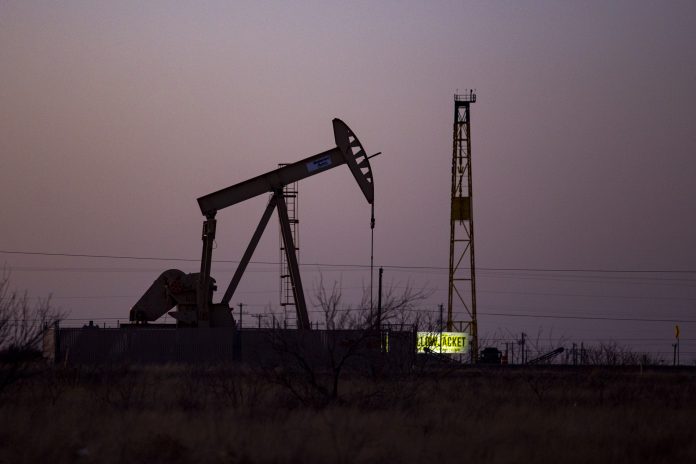
The Permian Basin energy industry is using lots of fresh groundwater for fracking and the question arises if the supply will always be sufficient.
Will the aquifers be drained and the Permian Basin become a wasteland?
Odessa oilman Kirk Edwards and Waco economist Ray Perryman say no. There are complex issues to be dealt with, but the responsible agencies and companies are staying ahead of the curve.

“The need for fresh water to fracture stimulate oil wells in West Texas is an issue that is multi-pronged,” Edwards said. “First and foremost, oil companies need a certain freshness in their completion water to allow the gel systems and breakers in the frac fluid to work properly as designed.
“To date the water supplies have been very adequate as technology and creativity have always been able to get the water to location at an economic price. No damage that I know of has happened to any freshwater aquifer as the supply is keeping up with the needs.”
Edwards said the new issue is not the water being used to frac with but the water that then gets produced back with the oil once the well is completed.
“This produced water is being gathered in multiple sites and either injected underground or recycled to be used again for frac water,” he said. “The good news is that technology has made the recycling of produced water ever more competitive with the use of fresh water from an aquifer which is allowing longer and better use of the aquifers ahead.”
Edwards said there are still massive amounts of water being injected into formations that are causing seismicity or earthquakes that must be addressed and prevented.
“To me the oil industry needs to get a ‘Manhattan Project’ started that addresses how we utilize this produced water and convert it into a potable quality that will allow it to be used in watering crops or animals ahead,” he said. “It is not good that the seismicity is getting bigger and more frequent as the water amounts being injected fill up the formations they are being disposed in and cause the earthquakes we have been seeing all across West Texas.
“We have brilliant folks in this industry and this should be the most important project ahead for them to collaborate on and solve.”
Perryman said water supplies speak not only to the quality of life but also to economic sustainability.

“The Permian Basin has a tremendous opportunity in the coming decades, but it also faces challenges in workforce, education, infrastructure, healthcare and quality of life,” Perryman said. “One of the greatest of these challenges is assuring adequate water supplies.
“A study by the Texas Water Development Board, the U.S. Geological Survey and the University of Texas provides a perspective. This research found that total annual statewide water use by the oil and gas industry is projected to be about 315,000 acre feet per year at least through 2060.
“With the expected advances in recovery techniques and the additional oil and gas reserves that USGS expects to be discovered in the future, it will likely be much longer.”
An acre foot is an acre of water a foot deep.
Perryman said the TWDB’s planning documents show that in 2020 about 62 percent of the water usage in the Permian Basin was related to irrigation along with 18 percent being used by municipalities and 14 percent for mining, which included oil and gas and aggregates.
“Based on current patterns and without corrective efforts, the region would develop a water shortage in the decades to come,” he said. “A range of strategies has been recommended by the board including conservation as well as recycling in the oil and gas industry, both of which are already occurring to a significant degree.
“Our research has also found that investments in new and emerging technologies and developing additional resources are promising avenues.”
Perryman said that even if the energy industry recycled all the water it used, shortages could still develop because the industry represents only 14 percent of the total use and that percentage is projected to drop in the future. “The TWDB is being proactive in trying to ensure adequate supplies and investments will be made to avoid such a scenario,” he said.
“Brush control, conservation, reuse and desalination could all be part of the solution. Desalination and reuse are viewed as good options for many of the communities across the region, but such facilities are very expensive to develop and permit, which will be a significant constraint. It is also challenging to dispose of the reject concentrate from such plants.
“In our work with major regulatory agencies and foundations focused on water issues, we have consistently found that agricultural is the largest user with the greatest potential for conservation in virtually every area.”
Perryman said concerns about draining the aquifer and running out of water are unrealistic.
“First there is extensive oversight from the TWDB and other agencies that would lead to action well before such a disaster situation arose,” he said. “In addition dropping aquifer levels change the economics of water use.
“For example as production of irrigation wells falls it becomes more expensive to irrigate fields. Similarly as water prices to the oil and gas industry rise, the incentives to enhance reuse and conservation also rise. At some point it may well make economic sense for facilities such as desalination plants to be developed for use by the energy industry even in the absence of any regulatory requirements.”
Perryman said running water pipelines from the Gulf of Mexico or Canada to West Texas are not impossible and may have some appeal, but the complications of permitting and constructing them and the exorbitant expenses that would entail render those options unlikely.
“What’s more likely is a range of effective initiatives that keeps the supplies sufficient to meet projected demand,” he said. “There are also promising technologies such as small-scale nuclear power plants which can both provide electricity for a production area and recycle the water using heat.
“Techniques to effectively treat somewhat brackish groundwater are also improving. The TWDB has been watching the situation for decades and with the recent passage by voters of a measure to help fund water development projects I think we will see a slow and steady increase in available water to meet future needs.
“Given the importance and profitability of Permian Basin oil and gas production and the nature of markets, I anticipate that needed water resources will be obtained and the price of water will likely increase.”



